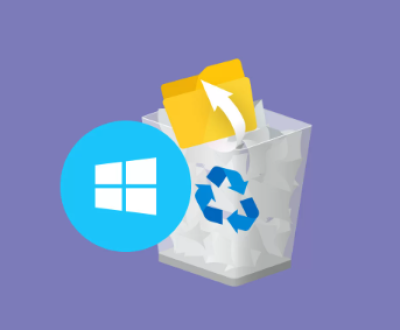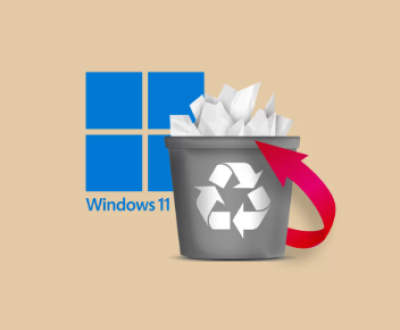When using a computer, you are constantly generating temporary data without even realizing it. Whether you are installing software, browsing the internet, editing documents, or even gaming, your operating system (OS) is working behind the scenes, creating, modifying, and deleting temporary files. These files are stored in a special location known as the Temp folder.
1. What Is the Temp Folder?
The Temp (Temporary) folder is a special directory on your computer where the operating system and applications can store files that are needed temporarily.
Temporary files, often called temp files, serve a wide variety of purposes:

Helping applications run smoother by caching data.
Storing incomplete downloads.
Backing up documents while they are being edited.
Holding data extracted during software installations.
Saving sessions for programs in case they crash.
Once their purpose has been served, these files are typically meant to be deleted — but they often linger, leading to bloated storage and, sometimes, system issues.
2. Why Would You Want to Find the Temp Folder?
There are several reasons you might need to access the Temp folder:
Free Up Disk Space: Deleting unnecessary temp files can reclaim precious storage space.
Troubleshoot Software Problems: Some issues (like installation errors) can be traced back to corrupted temp files.
Recover Lost Work: Unsaved versions of documents might be found in the Temp folder after a crash.
Protect Privacy: Temp files sometimes contain sensitive data. Regularly clearing them helps protect your privacy.
Speed Up Performance: A bloated Temp folder can slow down your computer over time.
3. Where Is the Temp Folder Located?
The location of the Temp folder depends on the operating system you’re using.
3.1 Finding the Temp Folder on Windows
Windows has a couple of Temp folders:
System Temp Folder: Used by Windows itself.
User Temp Folder: Used by programs running under your user account.
Default Locations:
System Temp Folder:
plaintext
C:\Windows\Temp
User Temp Folder:
plaintext
C:\Users\\AppData\Local\Temp
How to Access via Shortcut:
Press Win + R to open the Run dialog box.
Type:
shell
%temp%
Press Enter.
This will open your user Temp folder.
You can also manually navigate:
Open File Explorer.
Navigate to:
plaintext
C:\Users\\AppData\Local\Temp
Make sure you enable Hidden Items under the View tab if you don’t see the AppData folder.
Important Notes:
Admin Access: Accessing C:\Windows\Temp might require administrator privileges.
Automatic Cleaning: Windows 10/11 can automatically delete temp files through Storage Sense settings.
3.2 Finding the Temp Folder on macOS
On macOS, temporary files are stored in multiple locations:
System Temporary Files:
plaintext
/private/tmp
User Temporary Files:
plaintext
/var/folders
How to Access:
Open Finder.
From the top menu, select Go > Go to Folder.
Enter:
arduino
/private/tmp
or
bash
/var/folders
Press Enter.
You’ll see a lot of cryptic folder names — these are unique to users or apps.
Important Notes:
MacOS automatically clears many temp files when the system reboots.
You generally don’t need to clear temp folders manually unless you’re troubleshooting.
3.3 Finding the Temp Folder on Linux
Linux systems store temporary files in several directories:
Common temp folders:
plaintext
/tmp /var/tmp
How to Access:
Open a Terminal window.
Type:
bash
cd /tmp
or
bash
cd /var/tmp
Then:
bash
ls
to list contents.
Important Notes:
/tmp is cleared on reboot by most distributions.
/var/tmp is preserved across reboots and is used for longer-lived temporary files.
4. How to Manage the Temp Folder
Managing the Temp folder is crucial for keeping your system healthy. Here’s how to clean it up safely:
4.1 Manually Deleting Temp Files
On Windows:
Open the Temp folder using %temp%.
Select all files (Ctrl + A).
Press Delete.
If files are in use and can’t be deleted, skip them.
On macOS:
Go to /private/tmp.
Delete files you are certain are no longer needed.
On Linux:
In Terminal:
bash
sudo rm -rf /tmp/*
(Use caution! Make sure you only delete unnecessary files.)
4.2 Using Built-In Tools
Windows Disk Cleanup:
Type Disk Cleanup in the Start menu.
Select the drive (usually C:).
Check Temporary files and other categories.
Click OK.
Storage Sense (Windows 10/11):
Settings > System > Storage > Storage Sense.
Turn it on to automatically clean temp files.
MacOS Storage Management:
Apple Menu > About This Mac > Storage > Manage.
Choose “Reduce Clutter” and review large files.
Linux Temporary File Management:
Some Linux distros come with automatic tmp cleaning via cron jobs (system tasks).
5. Best Practices for Temp Folder Usage
Backup Before Deleting: Occasionally, temp folders contain important unsaved data.
Automate Cleanup: Use built-in tools like Windows Storage Sense or macOS Storage Management.
Be Cautious: Deleting wrong temp files during active installs or software runs can cause errors.
Monitor Size: Periodically check your temp folders if disk space is limited.
Secure Sensitive Data: Temp folders can contain credentials, cached emails, or other personal information. Regularly cleaning them improves privacy.
6. Common Problems and Solutions
6.1 Cannot Delete Some Temp Files
Problem: Windows says a file is in use and can’t be deleted.
Solution:
Reboot your computer.
Use Safe Mode.
Use a tool like Unlocker to force-remove files.
6.2 Temp Folder Keeps Growing
Problem: Temp folder gets huge despite cleanups.
Solution:
Check which application is generating excess temp files.
Update or reinstall problematic applications.
6.3 Missing Temp Folder
Problem: Temp folder is missing or corrupted.
Solution:
Recreate the folder manually:
plaintext
C:\Users\\AppData\Local\Temp
Set environment variables if necessary.
(Windows: System Properties > Environment Variables > TEMP/TMP)
7. Recovering Files from the Temp Folder
You might be able to recover unsaved files like Word documents, Excel spreadsheets, or project files.
Steps:
Search Temp folders for file types like .tmp, .wbk (Word backup), .asd (AutoRecover).
Open with corresponding programs.
Save recovered files properly.
8. Advanced Temp Folder Tips
Custom Temp Folders: Some users set TEMP/TMP to another drive to reduce SSD wear.
Virtual Machines: VM snapshots might store temporary system data.
Gaming: Game launchers like Steam, Epic Games, or CurseForge use temp folders during installs.
Data Recovery Tools: If temp files are deleted accidentally, tools like Recuva can sometimes recover them.
The Temp folder, though often hidden from day-to-day view, is a vital part of every operating system’s inner workings. It silently supports your activities by holding temporary data needed for smooth operation, recovery, and efficiency.
By understanding where the Temp folder is located, why it matters, and how to manage it, you can take greater control over your computer’s health, performance, and security.
About us and this blog
Panda Assistant is built on the latest data recovery algorithms, ensuring that no file is too damaged, too lost, or too corrupted to be recovered.
Request a free quote
We believe that data recovery shouldn’t be a daunting task. That’s why we’ve designed Panda Assistant to be as easy to use as it is powerful. With a few clicks, you can initiate a scan, preview recoverable files, and restore your data all within a matter of minutes.

 Try lt Free
Try lt Free Recovery success rate of up to
Recovery success rate of up to









